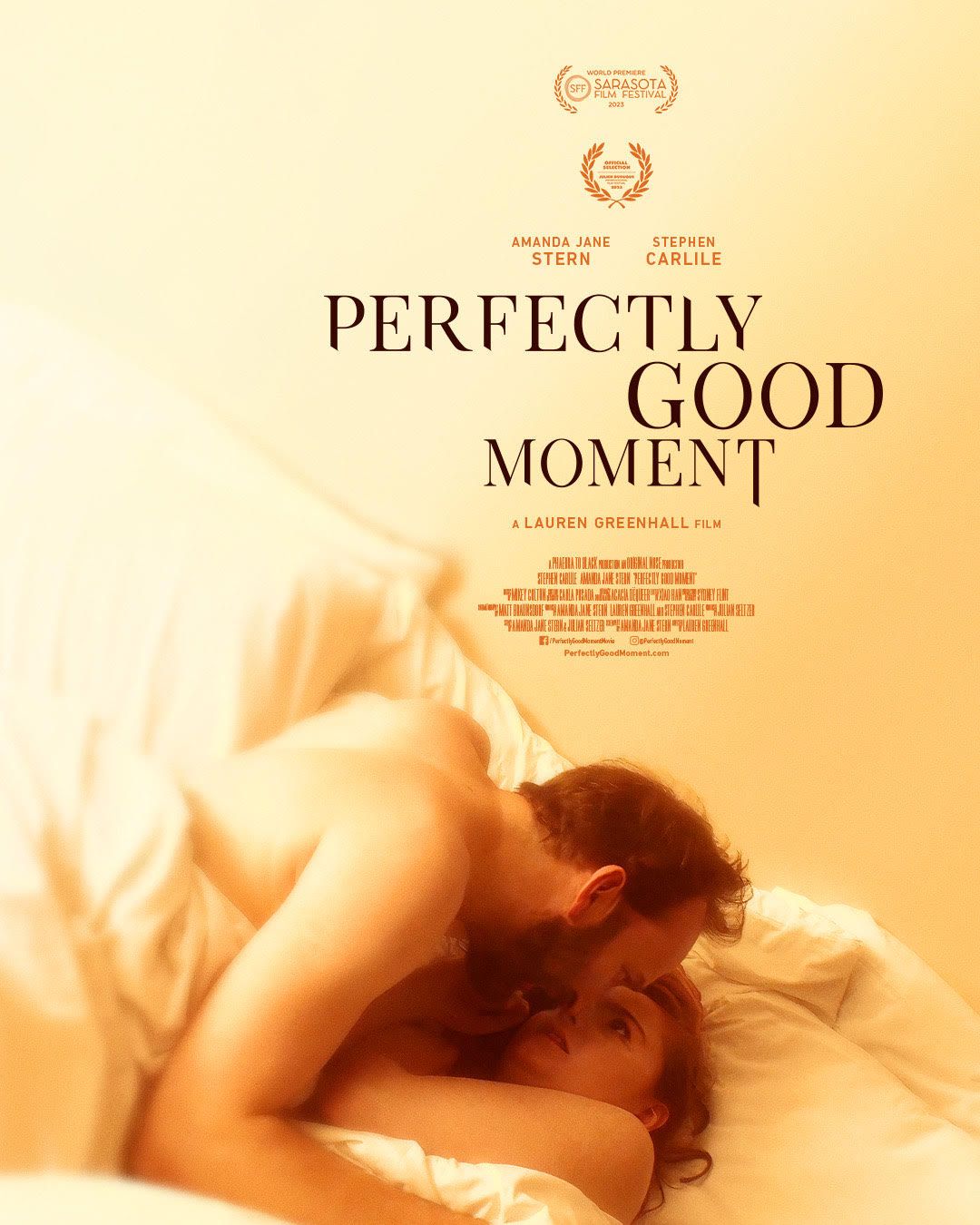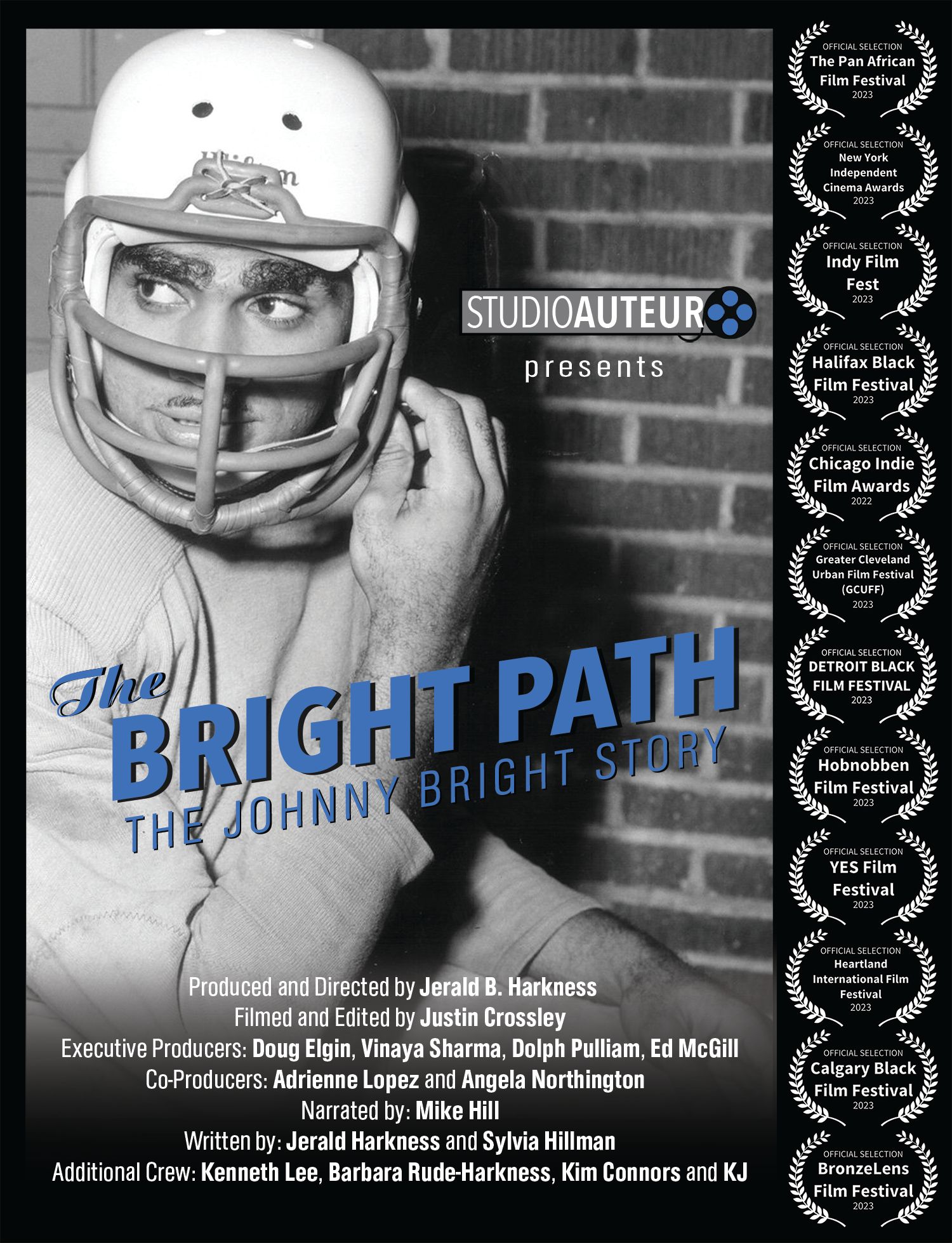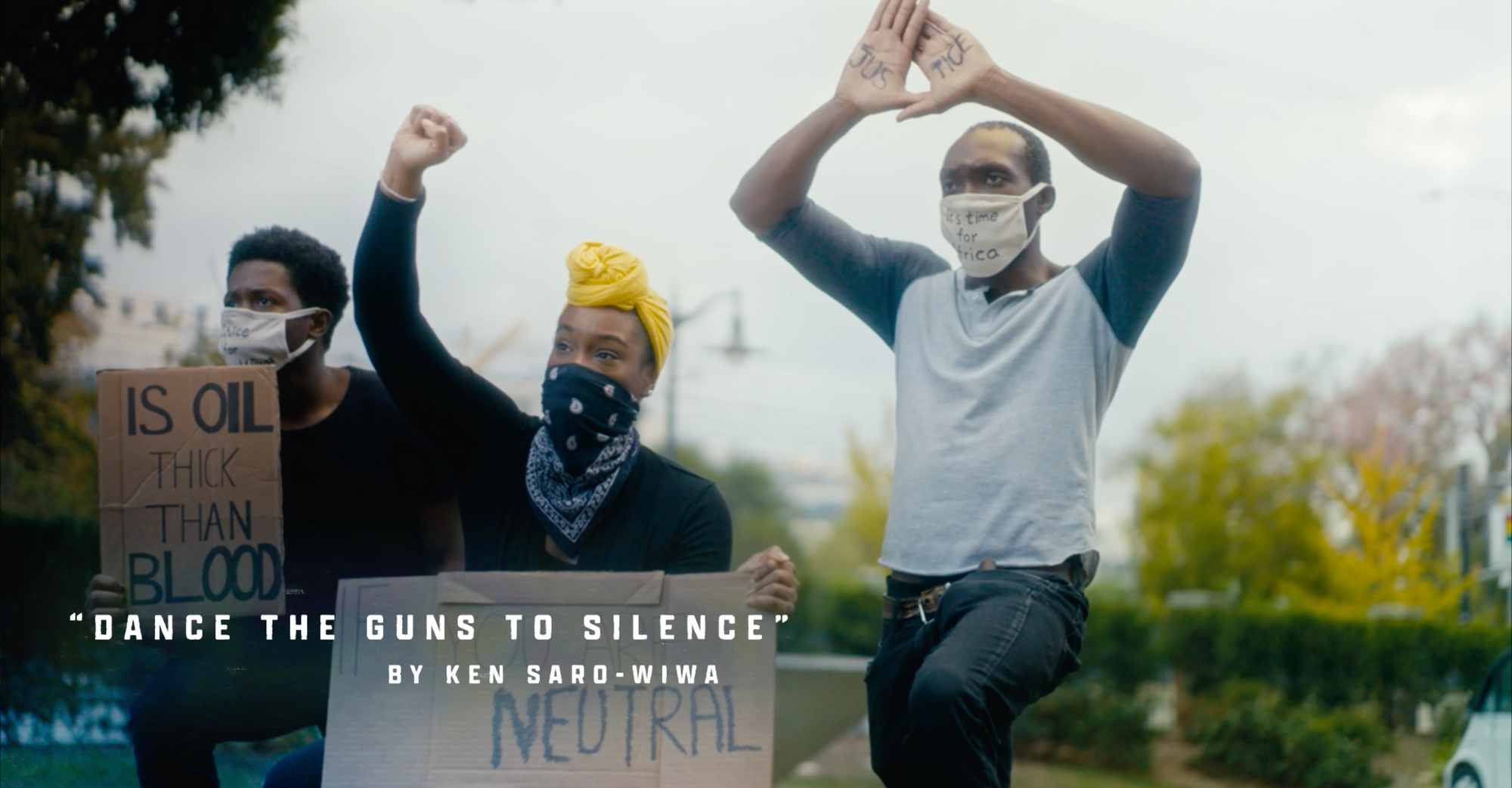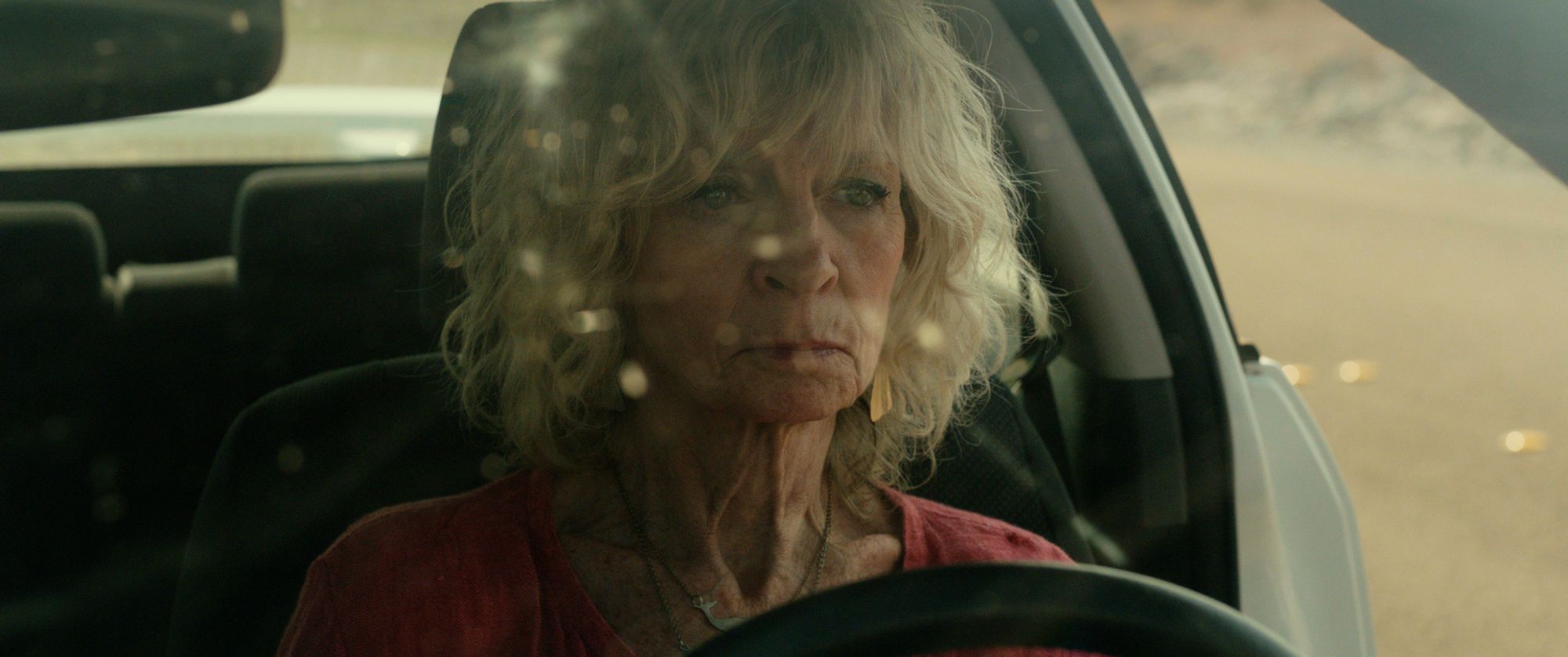Q&A: Meet five filmmakers from across the U.S. sharing work at Hobnobben Film Festival in Fort Wayne

Cinema Center’s annual Hobnobben Film Fest is back Thursday-Sunday this week with more films, workshops and ways to participate than ever before.
- You might remember: Hobnobben is Fort Wayne’s first independent film festival, started in 2016, featuring 24 films.
- Since then: It’s grown to 144 films this year from 30 countries and in 27 languages. More than 20 percent of the films have an Indiana connection.
We met with five national filmmakers sharing work at Hobnobben this year for a quick Q&A about their films.
1. Perfectly Good Moment
“What happens when the things that make your relationship passionate and exciting are the same things that make it unbalanced and toxic?”

Q&A with Amanda Jane Stern
Screenwriter, Actor, Producer
What city are you visiting from?
I am a born and raised New Yorker, currently based in Brooklyn.
Give us a brief summary of your film.
David (Stephen Carlile) is thrilled when his much younger ex-fiancée Ruby (Amanda Jane Stern) decides to give him another chance. But his hope to resume planning their wedding is thwarted by Ruby’s state-of-the-art revenge plot.
What inspired you to create this film?
I've always loved two-character movies, and I'm a big fan of revenge thrillers. I also love playing with movie tropes and kind of recontextualizing themes and tropes that we've seen time and again. As someone who grew up on older movies and loves film noir and erotic thrillers, I wanted to play with the conventions of the old erotic thrillers through a more modern, women-focused lens.
What do you hope viewers get from watching your film?
I think our director Lauren Greenhall has the best answer for this question, so I'm going to steal her quote:
“I hope that audiences come for the exciting revenge fantasy, but leave with a new way to think about the under-discussed forms of manipulation in relationships,” said Greenhall. “I jumped at the opportunity to dissect this dynamic and explore a question that has plagued me for years: What happens when the things that make your relationship passionate and exciting are the same things that make it unbalanced and toxic?”
How many other film festivals have you participated in (with this film or others), and what was the experience like?
We've played at over a dozen film festivals now with Perfectly Good Moment, and it's been amazing getting to experience the film with an audience and hear people's reactions. I've attended festivals in the past with films that I acted in, but this is the first time that it's a film I also wrote and produced, which definitely makes it more exhilarating… and frightening.
Have you attended Hobnobben before, and what drew you this year?
I have never been to Hobnobben before. It came up while doing festival research and seemed like a really cool one to submit to.
If readers want to connect with you about your film, will you be speaking at any Hobnobben events, or how can they reach you?
Our film's intimacy coordinator Acacia DëQueer will be at the screening and doing the Q+A after. They came on at the beginning of pre-production and stayed through post, and they can answer just about any question about our film. You can check out our website www.perfectlygoodmoment.com. I am also on social media @amandajanestern. Follow along our journey on our social media pages Instagram @perfectlygoodmoment and Twitter @PGMMovie.
2. The Bright Path: The Johnny Bright Story
“Johnny Bright is a Fort Wayne native and arguably one of the greatest athletes from the city.”

Q&A with Jerald Harkness
Producer/Director
What city are you visiting from?
Indianapolis, Indiana.
Give us a brief summary of your film.
The Bright Path: The Johnny Bright Story chronicles the life of African American, Johnny Bright, a trailblazer who changed college football forever. Despite experiencing one of the most egregious acts of violence in the history of sports in 1951, Bright carved his own path in life to enjoy a Hall of Fame career in the Canadian Football League. Perhaps, his most significant accomplishment was as an educator, coach and principal where he influenced the lives of hundreds of kids.
What inspired you to create this film?
I met Doug Elgin who was the Commissioner of the Missouri Valley Conference at the time, and he pitched me the idea of producing a documentary on Johnny Bright, who played his college football at Drake University, which is a part of the Missouri Valley Conference. I must admit that I had not heard of Mr. Bright when Doug told me about him.
Tell us about your film’s connection to Fort Wayne or Indiana (if applicable).
The main subject of the documentary Johnny Bright is a Fort Wayne native and arguably one of the greatest athletes from the city. Mr. Bright still has family living in Fort Wayne, which includes his daughter Deanie Bright-Johnson and his granddaughter Bre Johnson.
What do you hope viewers get from watching your film?
As an African-American athlete competing in the late 1940's and 1950's, Johnny Bright faced a number of obstacles in life. One of the many things that I admire about Mr. Bright is that he had a vision for how to live his life, and he committed to carve out his own career based on his terms in spite of facing many difficulties.
How many other film festivals have you participated in (with this film or others), and what was the experience like?
"The Bright Path" has the good fortune of being selected in 13 total film festivals. The response and support for the project has been fantastic, and the team behind the project is so pleased with how audiences across the country are now aware of who Johnny Bright was and how he impacted so many people.
Have you attended Hobnobben before, and what drew you this year?
I have never attended Hobnobben before, but I'm excited to check it out! I've filmed in Fort Wayne many times, and I've always enjoyed my stay there.
What films/events are you most interested in at Hobnobben (besides your film)?
I'm excited to meet and interact with other filmmakers. I understand the challenges in getting a film completed, and film festivals are a great way to celebrate the accomplishment of finishing a film project.
If readers want to connect with you about your film, will you be speaking at any Hobnobben events, or how can they reach you?
I'm excited to be doing a Q&A after the screening, and I will be joined by Bre Johnson, the granddaughter of Johnny Bright. People are more than welcome to reach out to me via e-mail at jerald.harkness@gmail.com.
3. I Am More Dangerous Dead
“Most people do not know where the gas they buy comes from, or what effect it has had on the people and places it is being exploited from.”

Q&A with Majiye Uchibeke
Director
What city are you visiting from?
I am originally from Nigeria, attending the University of Southern California. I am in the Cinematic Arts in the MFA Film and TV Production program, and I will be visiting from Los Angeles.
Give us a brief summary of your film.
This stirring documentary sees Ogoniland activist and writer Ken Saro-Wiwa take on Shell for their pollution of the environment caused by oil exploitation. Watch the trailer here.
What inspired you to create this film?
I Am More Dangerous Dead is a film born out of my personal experience growing up in the oil-rich Niger Delta, in the oil-infested lands and rivers as a result of over 60 years of oil exploitation by multinational oil corporations like Shell Oil in the region.
After moving to the U.S. for my MFA degree at USC film school, I noticed that Shell is one of the most popular gas stations in the country. There is a Shell gas station every few miles in big cities, like Los Angeles, and the issue I noticed was: Most people do not know where the gas they buy comes from, or what effect it has had on the people and places it is being exploited from.
In the making of this film, we did multiple man-on-the-street interviews at Shell gas stations, and people definitely did not know the story of Ken Saro-Wiwa, whose fight against Shell’s environmental damage led to his execution alongside eight other activists; therefore, solidifying in my mind that we had to tell this story of a grave injustice that happened in my country — and still happens today.
In 2020, Global Witness recorded 227 murders of environmental activists worldwide. In 2021, they recorded 200 murders. That same year, Shell made more than $400 billion, roughly $1.1 billion per day. Clearly, brutal executions of environmental activists continue to this day all around the world, but for companies, like Shell, business continues as usual. So we definitely needed to make this film to let you know what your favorite neighborhood Shell gas station is up to in places where they go to exploit other people's oil.
Tell us about your film’s connection to Fort Wayne or Indiana (if applicable).
Fort Wayne is a place with beautiful environments, and people who want to take care of their city. We share this basic human need back home in Nigeria, as well, which we were deprived of because of the greed by corporations, like Shell. So this story is universal because every human wants to live in a clean environment that is not polluted by oil exploitation, 24/7 gas flaring, pipeline explosions, and the list goes on.
What do you hope viewers get from watching your film?
I Am More Dangerous Dead examines the legacy of Ken Saro-Wiwa, how his message has spread across the world, making him more dangerous dead than alive, as he said. It shares awareness of the issues that go on when the big corporations we rely on unjustly exploit people. The message of this film is conscious consumerism of gasoline products, reminding viewers that the gas they put in their car has had an adverse effect on people somewhere in the world and that we can do something to make a change to save our planet and save environments all around the world.
How many other film festivals have you participated in (with this film or others), and what was the experience like?
We have participated in numerous other festivals and won several awards, including being nominated for a Yugo BAFTA Student Award. These festivals and awards have been fascinating and a testament that the world understands and stands with our struggle and fight for environmental and social justice.
Have you attended Hobnobben before, and what drew you this year?
This will be my first year attending, and I hope to come back for other years. I am drawn to this festival because of how unique and well put together it is. It is a pleasure to share our film with audiences in Fort Wayne.
What films/events are you most interested in at Hobnobben (besides your film)?
I will try to attend as many screenings as possible at the festival and meet other filmmakers and celebrate their films.
If readers want to connect with you about your film, will you be speaking at any Hobnobben events, or how can they reach you?
My website is www.majiyeuchibeke.com. They can contact me on there as well.
4. Bloom
“This film is an ode to the dreams that drive us, the moments that stagger us, and the decisions we make that will never define us.”

Q&A with Mark Totte
Writer & Director
What city are you visiting from?
I currently live and work in Taos, New Mexico. I was born in Troy, Michigan, but grew up in Bloomington, IN. Indiana has, and always will have, a special place in my heart.
Give us a brief summary of your film.
Bloom is a fictional drama that follows the past and present life of Kate, a mother of two children and her poodle, Storm. Stirred by the desire to flee her small-town Indiana life, this ambling Midwest tale begins with Kate in her late 60s, on the eve of an impromptu vacation that quickly snowballs into an adventure across America. Driven by memories from her past, we come to learn how Kate once broke free from her hometown and toured with a band on the road. Unfortunately, this dream came to an abrupt end leaving her right back in the stagnant, small-town life she so desperately yearned to escape from. With her children’s inadvertent guidance, Kate’s attempt to fulfill her freedom is met face-to-face with her life’s deepest regret.
What inspired you to create this film?
The lead actress, Kate, has always been a dear friend of mine. We met when I was a student at Indiana University, and she acted in some of my college films. After college, I was having a hard time breaking into the film industry in Los Angeles. Over the course of four years, I found myself driving back and forth from Michigan to LA via I-70 (where a majority of the film was filmed), each time hoping to reignite my life, hoping that something new would give, and I would feel a sense of fulfillment and direction. It never came.
When I eventually moved back to Bloomington, Ind., and met up with Kate one night, I realized we had a lot more in common. Kate, 68 at the time, detailed her life story about how she had traveled with a band when she was younger and dreamed of a big life; yet, due to some unfortunate events, she trapped herself in a life that has proved almost impossible to escape from. She still hasn't given up hope for a better life, by her standards. I thought to myself: Would I also feel this way when I am 68 years old? This film is an ode to the dreams that drive us, the moments that stagger us, and the decisions we make that will never define us.
Tell us about your film’s connection to Fort Wayne or Indiana (if applicable).
The lead actress, Kate, has lived in Indiana her entire life. We also shot on location at more than 20 different towns in Southern Indiana.
What do you hope viewers get from watching your film?
I hope viewers feel “seen” after watching Bloom. I know that might come off as grandiose, but that's always been the objective with Bloom. It's a film about life. It's not a glamour-filled adventure, which in my experience, is what life feels like 99 percent of the time.
Below the surface, the film asks some big questions. For instance: What does it mean to not be young anymore? How do we grapple with the day-to-day when things don't work out as we imagined they would? Life is a labyrinth with no destination. There's only moving forward. We can get so caught up with the “shoulda, woulda, coulda” in our lives that we might create one giant knot that we believe we are destined to untie before our time is up. However, at the end of the day, all of our regrets are just a false image of who we truly are. The false narrative we tell ourselves will always win, if we let it.
It may be near impossible to step onto the sidelines and view our life as a movie passing by in front of us. But if we were able to, would we be able to see the amount of love that exists? Bloom takes on a real life and shows us that, no matter our faults, we are spiritual, brave, and loveable beings.
How many other film festivals have you participated in (with this film or others), and what was the experience like?
So far, Bloom was an official selection and had its world premiere at Heartland International Film Festival in Indianapolis earlier this month. That was an unreal experience for me, personally. It was the perfect homecoming for Bloom. A film about an Indiana woman showing for a decorated audience in the heart of Indiana... It doesn't get much better than that. We got a lot of positive reactions and also sold out our last screening! Bloom was also an official selection at Louisville's Festival of Film in Louisville, Ky., and qualified for numerous international film competitions in Sweden, Canada, and the UK.
Have you attended Hobnobben before, and what drew you this year?
I have not attended Hobnobben yet! When I first discovered the festival and submitted Bloom, I had a great feeling that Bloom would slot in very nicely there. Hobnobben's motto, "we encourage people to see, and be seen," is as real as it gets. I am grateful to be showing Bloom at Hobnobben and to the people of Fort Wayne. The Hobnobben team does an incredible job — from the communication, to the look and feel, and the curated programming. I believe this film festival will continue to grow and be a hallmark festival in the Midwest in only a matter of time.
What films/events are you most interested in at Hobnobben (besides your film)?
I am most interested in the curated blocks of short films that Hobnobben put together. I think it's an extra treat for audiences when a team strings together a concise theme for the films they are showing. If you take a minute to look into the programming Hobnobben curated for its festival goers, you'll see that it was extremely well thought out. I am personally interested in the short film blocks: Tough Topics, (Re)connection, Resilience of the Human Spirit, and Stories from Ukraine
If readers want to connect with you about your film, will you be speaking at any Hobnobben events, or how can they reach you?
I am trying my best to make it to Ft. Wayne. I live in New Mexico, and it's a bit of a stretch with work. But I am hoping to be there! If anyone feels compelled to get in touch with me, I am here! Find me on instagram @marktotte, or shoot me an email marktotte@gmail.com. I would happily jump on a phone call with whomever.
Anything we didn’t ask that you’d like to share?
After four official screenings for Bloom, I am confident to say that I think the film lands particularly well with the older generation. And I think it will hit home for a lot of folks native to Indiana. This story is truly homegrown and will absolutely resonate with those who can relate to Kate and her journey.
5. Liminal: Indiana in the Anthropocene
“The idea is that the Anthropocene isn’t just out there, somewhere, but it is right here, too.”

Q&A with Zach Schrank
Professor of Sociology/Film Director
What city are you visiting from?
I live in South Bend, as does Aaron Yoder (Cinematographer), and Nate Utesch (composer) is from and lives in Fort Wayne.
Give us a brief summary of your film.
Liminal is a non-narrative, meditative film comprised entirely of drone footage across Indiana and accompanied by an original score written by Nate Utesch of Metavari. The film reveals a compelling and uncanny view of Indiana in all its features and forms that illustrates our state as a microcosm of this new planetary epoch, following the sequence of the materials economy (Extraction, Production, Distribution, Consumption, and ultimately, Waste).
What inspired you to create this film?
I am a Sociologist at Indiana University South Bend interested in consumerism, environmental sociology, and our interconnected relationships with the planet. The concept of the Anthropocene - a human-dominated planet and our indelible impact on it – has fascinated me for more than a decade. In 2020 Edward Burtynsky made the film Anthropocene: The Human Epoch, and I was captivated by the surreal imagery and brilliant cinematography that captured human activity around the planet in ways that looked alien or otherworldly.
The imagery of climate change or the Anthropocene we see is often from distant locations most of us will not get a chance to visit. The lithium pools in the Atacama Desert, the Amazon or Indonesia’s rainforests, coal mines in Germany or cobalt mines in the Congo, the coastline of Bangladesh, or the smog skies of New Delhi. Because the visual association is so far away, it is easy for most of us to assume the Anthropocene is just somewhere else. But what Burtynsky’s film inspired me to try to do was find ways we might be able to see the Anthropocene in the places we live. And so Liminal was born out of the attempt to convey the essence of the Anthropocene within a bounded location as a microcosm. I wanted to share a different perspective of Indiana in an unfamiliar way; one that aligned with the type of imagery Burtynsky shares on a global scale, but condensed within our state. The idea is that the Anthropocene isn’t just out there, somewhere, but it is right here, too.
Stylistically, I was inspired by Ron Frick (Koyaanisqatsi 1982 & Samsara 2011), and early on we decided we wanted Liminal to be a non-narrated film just like Frick’s.
Tell us about your film’s connection to Fort Wayne or Indiana (if applicable).
The film is entirely composed of footage from over 40 locations across Indiana. Each of the team members who worked on the project are native Hoosiers, too, including executive producers Rocky Walls and Zach Downs of Hoodox. Nate Utesch has lived in Fort Wayne most of his life and once performed a live rescore of Metropolis at Cinema Center. It was this original rescore that made me want to bring him on board to score Liminal.
What do you hope viewers get from watching your film?
In a basic and direct sense, I hope people watching the film feel immersed and mesmerized as they float around on a strange and unfamiliar tour of Indiana with music accompanied to bring it to life in striking ways. It would also be great if Hoosiers came away thinking, “Wow, I can’t believe that was all in Indiana” and began to see where we live in a different way.
In a deeper way, it would be my hope that the weighty concepts associated with the Anthropocene are conveyed in a way that some of the viewers begin to see the immediacy and magnitude of transformations earth scientists are revealing to us. The goal is to lead with art to connect with viewers around a profoundly important topic.
How many other film festivals have you participated in (with this film or others), and what was the experience like?
We have participated in four film festivals at this point, all in Indiana, except for a Silent City Film Festival in Ithaca, NY, which is dedicated to the visual relationship between music and film. Heartland Film Festival in Indianapolis and Hobnobben in Fort Wayne are the only two we have been able to attend, though, so these are really special to us, and the experiences have been warm and fuzzy!
Have you attended Hobnobben before, and what drew you this year?
I have not attended Hobnobben before, but was drawn to what they value (social impact, education, authenticity, inclusivity, thoughtful curation). Plus, I am excited to meet a bunch of other filmmakers in our region and see new work I might not get a chance to view otherwise.
What films/events are you most interested in at Hobnobben (besides your film)?
I am excited to see the 13 shorts from Indiana filmmakers during the opening night shorts, as well as a variety of other films that are based upon people or stories from Indiana and the Midwest. Hobnobben is an excellent place to enjoy some cinema spotlight on Hoosiers and midwesterners (with a bunch of flavor from films and stories from all over the world, too)!
If readers want to connect with you about your film, will you be speaking at any Hobnobben events, or how can they reach you?
Nate and I will be at the screening of Liminal for the opening night, and I can be reached at zschrank@iusb.edu.
Anything we didn’t ask that you’d like to share?
It is a real honor to connect with folks around Indiana who are putting time and energy into their theaters, festivals, making films, and creating opportunities for communities to come together around the magic that is movies. I've met some really wonderful people, and we had an opportunity to screen Liminal at Cinema Center in May through our partnership with Indiana Humanities. Art, Alix, and Cambry were awesome to work with and we are thankful for the opportunity to show it there again with a live score on opening night.
